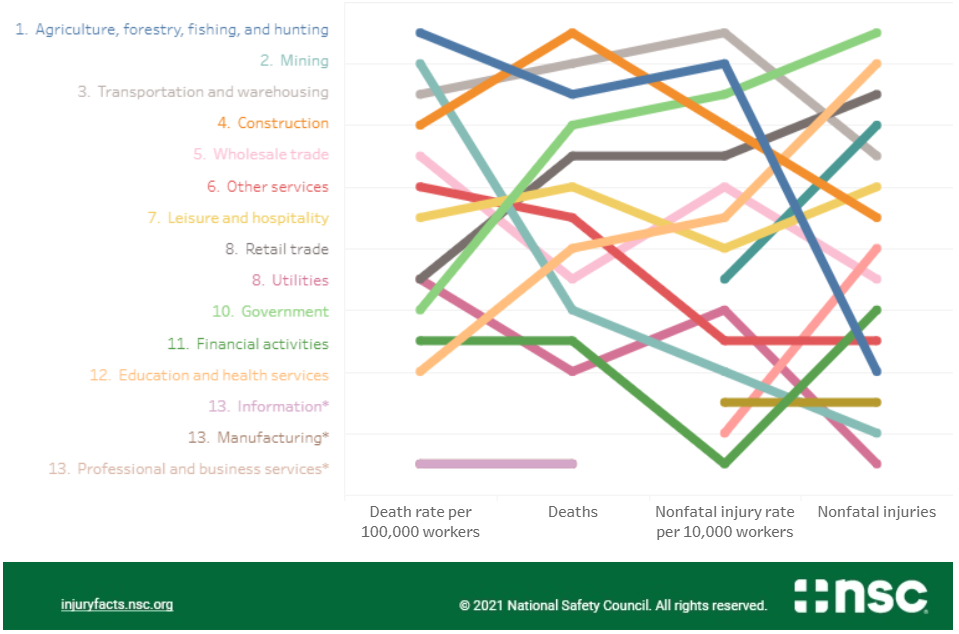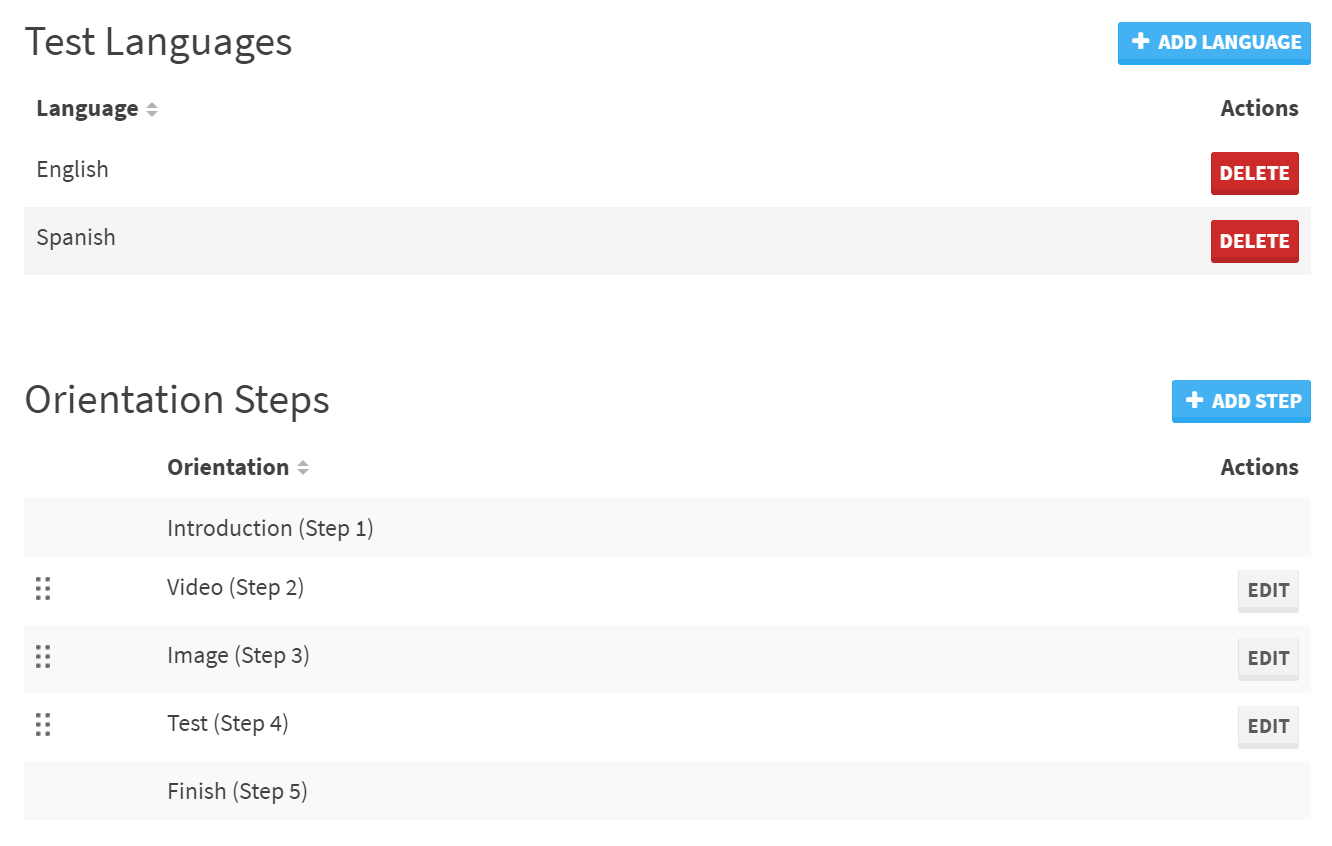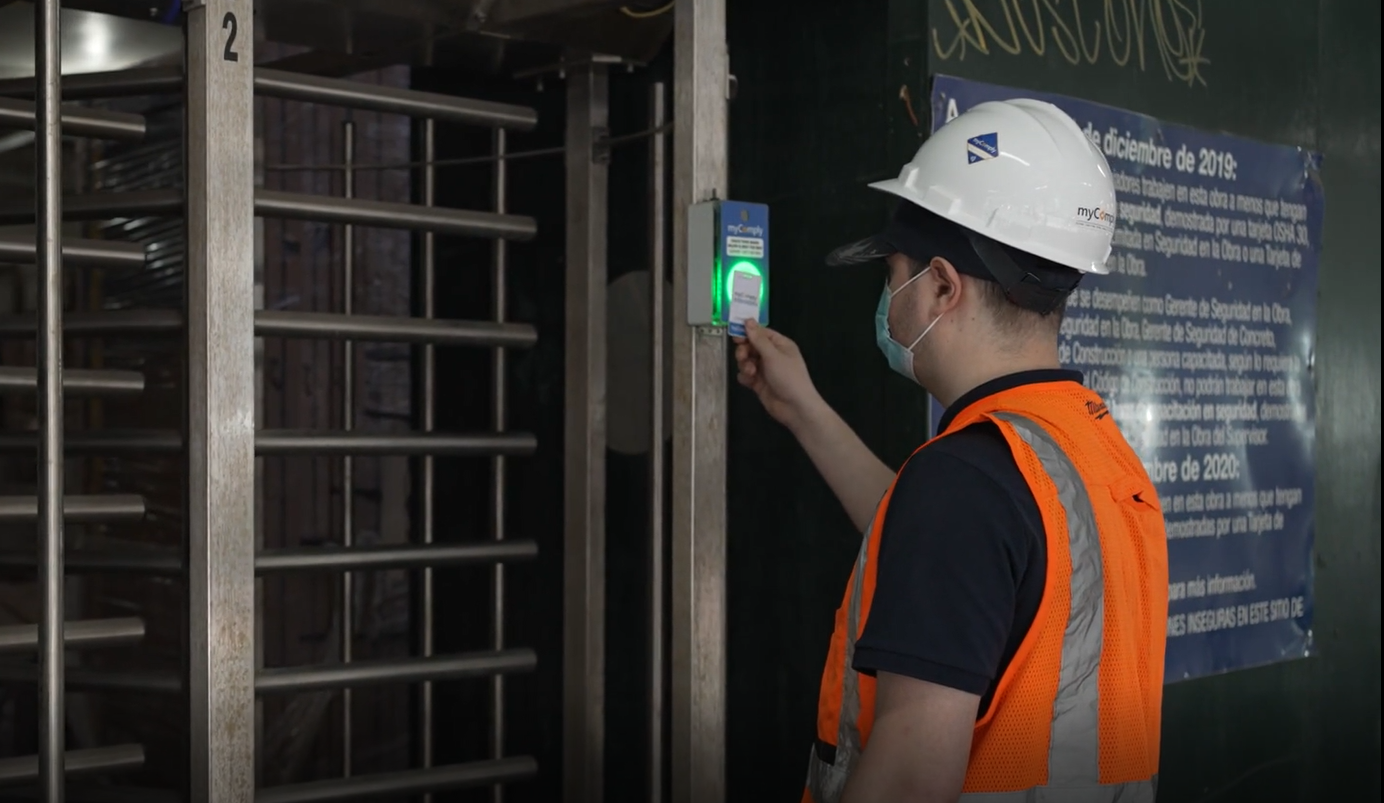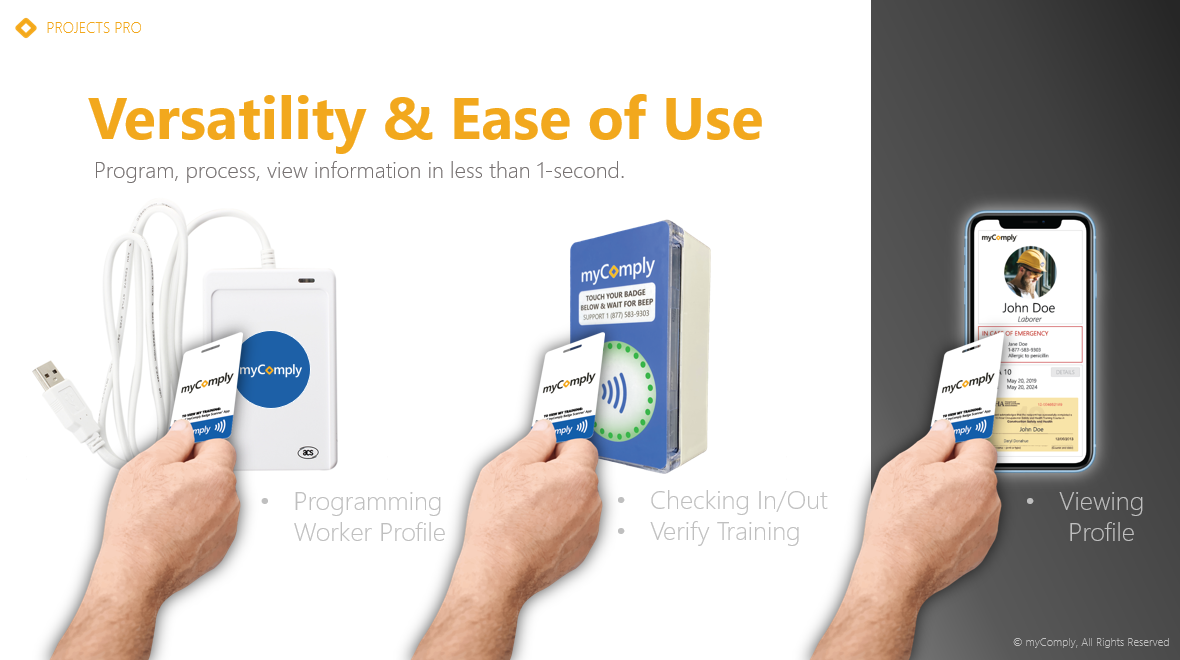Like most global sectors, the construction industry is amidst rapid change, being dealt at the hand of technological advancement. Historically, construction was among the slowest to move, demonstrating an IT investment of 1.51% of annual sales revenue, lagging the average of all other sectors at 3.28%.
However, there’s a shift occurring. A recent study by Software Connect found that 81% of responding General Contractors (GCs) and Construction Managers (CMs) plan to increase their investment in construction technology over the coming years.
Blueprints are becoming tablets, operators are becoming autonomous equipment, two-dimensional project renderings are becoming interactive building information models. With all of this change, some might ask, what’s next?
The answer? Site safety orientations.
This article will explore the relationship between orientations and site safety, steps that can be taken to improve your orientations, as well as our predictions for where construction orientations are headed in the future.
Or, skip the read and explore myComply’s Online Orientation module!
Table of Contents
The Relationship Between Orientations and Site Safety
How to Improve Your Construction Orientations
1. Standardize Course Materials/Delivery
2. Promote Open and Honest Communication
3. Track Worker Orientations
4. Use Site Orientation Software
The Future of Construction Orientations
1. NFC Everything
2. Less Cards, More Integrations
3. AR/VR Enablement
myComply for Orientations (and More)
The Relationship Between Orientations and Site Safety
The problem:
Construction is a dangerous industry. In fact, according to The Bureau of Labour Statistics, the construction sector ranked as the fourth most dangerous industry overall in 2019, while leading all other sectors in fatalities.
But what role do site orientations play in the safety puzzle?
A survey of 1,500 workers across 22 construction firms determined that 93% of workers believe that their workgroup is facing a safety risk that is not currently being discussed onsite. Worse yet, nearly half of those surveyed were able to site an injury that occurred because a worker didn’t speak up about a project-related concern. That corresponds with an incalculable number of injuries that could’ve been prevented by more thorough construction safety orientations.
The opportunity:
Taking an innovative and proactive approach to delivering site safety orientations. This involves leveraging available technologies, improving processes, and standardizing delivery. In turn, you can work to prevent more injuries on your sites and drive your bottom line.
But it isn’t just about the quantifiable benefits and financial relief. Site safety orientations also serve to promote a lot of intangible, qualitative benefit.
Some of the additional benefits to construction safety orientations include:
- They build worker confidence through the identification of potential hazards, as well as the controls in place to mitigate those hazards.
- They serve to balance the GC/CM’s need for project productivity with the subcontractor and worker need for safety and security.
- They increase the efficiency of new project workers.
- They serve as retention mechanisms, helping GCs and CMs to retain top subcontractor talent for future projects.
- They demonstrate the GC/CM’s moral obligation to protect workers from harm on their project sites.
How to Improve Your Construction Orientations
For many construction companies, site safety orientations have changed very little over the past few decades. However, if you want to promote safer site operations, you may want to consider making some of the following changes to your orientation program.
1. Standardize Course Materials/Delivery
Variance is the enemy of safety when it comes to safety instruction. One of the best ways that GCs and CMs can improve their site orientations is by building a strict course curriculum to promote more organized and focused instruction.
Here’s how to ensure orientation consistency:
- Use standardized instruction materials. All slides, handouts, and testing materials should be consistent across all orientations.
- Follow a standard format. If the flow of your general orientation is: GC introduction, key project contacts, chain of command, worker rights and responsibilities, first aid procedures, and then emergency preparedness—then do not deviate from that agenda.
- Meet regularly with your safety team to ensure standardization. One of the easiest ways to ensure consistency is by using a small group of educators, but for many enterprise construction firms, that simply isn’t a possibility. If this is a reality for your company, the next best thing you can do is schedule regular meetings with your safety team (at least monthly) so that your team can share learnings and ensure consistency is upheld.
2. Promote Open and Honest Communication
If workers are to get the most out of the construction safety orientations that you provide, then they need to feel comfortable speaking up about potential questions and concerns. There are a few ways that you can make this a reality, whether you plan to use a digital delivery system, a traditional system, or a hybrid solution.
How to promote better communication in site safety orientations:
- Practice active listening. Ensure that whoever is delivering the orientation is a strong listener. It is important that workers feel heard and feel comfortable expressing their concerns to the facilitator.
- Be clear and concise. Message delivery is critical, especially when English might be a second language to many workers.
- Regularly open the floor for questions. Most workers won’t ask questions unless they are given the opportunity to do so (if you are conducting online orientations, question boxes are the equivalent).
- Promote discussion. By baking activities into orientations, you give workers a chance to interact with each other and discuss topics that they may not feel comfortable surfacing with the larger group (if you are conducting online orientations, a discussion board is the equivalent).
3. Track Worker Orientations
A foundational problem with the construction orientation process is that many GCs and CMs have no easy way of tracking and ensuring that all workers have successfully completed an orientation before completing work on a project site.
For many, tracking is being done by issuing completion certificates and storing photocopies of those certificates in binders onsite. Though this can be effective on smaller projects, it is nearly impossible on larger projects with dozens (or hundreds) of subtrades working on them.
One of the best ways to combat this issue is by using digital compliance solutions to track worker orientations. Solutions like myComply allow GCs and CMs to not only log and track completed orientations, but all necessary certifications that every worker needs to be onsite. This also helps to mitigate the risk of fines if a worker fails to present a certificate to an inspection officer.
Source: myComply
4. Use Site Orientation Software
Though the end of the COVID-19 pandemic is on the horizon, there were some valuable lessons learned in the construction sector. One of those lessons pertains to the efficiencies to be had in digitizing some aspects of the site orientation delivery.
Though most GCs and CMs will likely revert back (or continue) to deliver the majority of their orientations onsite, there are some key benefits to a hybrid delivery model.
Some of those benefits include:
- Saving time. Through digital delivery, orientations can be conducted before a worker ever steps foot onsite, greatly improving the speed-to-production that GCs and CMs can achieve on their projects.
- Saving resources. Construction orientations are generally delivered by a Project Manager, Superintendent, Site Safety Manager, or another high ranking individual onsite. With a digital delivery, you can potentially save hours of valuable time that these individuals would otherwise have to dedicate to each orientation.
- Improving standardization. One of the most effective ways to ensure that all necessary information is relayed to every sub and every worker on your sites is by baking it all into a digital orientation.
Solutions like myComply allow GCs and CMs to easily build custom orientations that can be delivered via integrated myComply profiles to every worker that will be on a project.
Source: myComply
The Future of Construction Orientations
The aim of technological advancement is always to increase efficiencies and reduce the need for repetitive, monotonous labor. With that in mind, here are some of our predictions as to what the future landscape of construction orientations may resemble.
1. NFC Everything
Near-field communication (NFC) is technology that enables two devices to communicate without contact (generally at a distance of 4 cm or less). NFC is not new technology, as it has been around since 2003, and most smart devices are NFC enabled. That said, the construction industry has barely scratched the surface on NFC’s possible applications.
With respect to orientations specifically, one of the greatest challenges on mega projects is tracking which workers have completed their orientations and which have not. It isn’t out-of-the-ordinary for a general contractor on a large project to have 50-100 sub trades working on a given project site. With those trades all entering the project at various stages and employing various workers, ensuring that all orientations are completed can be a daunting task.
NFC technologies can alleviate much of this complexity. For example, myComply’s Smart Badges leverage NFC technology for access control. This allows GCs and CMs to guarantee that all workers entering a jobsite have completed an orientation. If they have not, access will be denied.
Furthermore, if Project Managers (PMs) or a Site Superintendent want to spot-check a workers certifications and ensure that an orientation has been completed, they can use the built-in NFC capabilities on their smart phone and the myComply app to scan a workers badge.
Here’s how it all works:
But this is just the tip of the iceberg. Expect NFC technologies to become a staple in the construction space over the next decade.
2. Less Cards, More Integrations
In construction today, it’s pretty standard for many workers to be carrying several different cards for access to various projects, physical copies of tickets and certifications, as well as cards that may be required by local law (ex. Local Law 196 in New York). This is inconvenient and inefficient for workers.
In the future, many of these cards could easily be replaced by smart phone apps or enabled by smart devices like Apple watches. The benefit to wearables specifically is the potential for other functionality, such as the monitoring and reporting of worker heart rates.
Did you know that the myComply platform can be used entirely through smart devices, eliminating the need for additional cards or hardware?
3. AR/VR Enablement
The desired outcome of all onboarding/orientation processes is simple: to provide new employees/workers with all of the information they will need to perform their duties safely and efficiently. AR/VR technologies present the opportunity to do this while also saving time and eliminating risk.
Here are a couple of the orientation opportunities with AR/VR:
- Site tours. VR could be used in association with a building information modelling (BIM) system to facilitate a site tour, while also enabling tours of the project site at various stages of development.
- Risk assessment testing. VR technology could be used to simulate a potentially hazardous situation where workers would then be tasked with addressing the situation based on their learnings throughout the orientation.
And the potential for AR/VR applications does not end with orientations. Expect various construction training programs to apply these technologies as a means of creating a realistic work environment, without workers ever having to leave the room.
myComply for Orientations (and More)
If you’re ready to take the next step in promoting safer project sites at your firm, then explore myComply, the leading compliance platform for GCs and CMs. myComply helps construction firms to ensure a safer, more qualified workforce through an integrated access control system, site orientation software, employee management software, and a project management solution.







